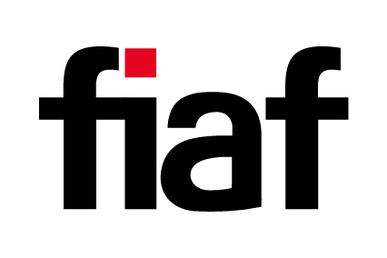City Symphonies: Sound and the Composition of Urban Modernity, 1913–1931, by Daniel P. Schwartz. McGill-Queen’s University Press, 2024, 220 pp.
Anthony Kinik
[PDF]
Review
Even before one has opened Daniel P. Schwartz’s new cultural history City Symphonies: Sound and the Composition of Urban Modernity, 1913–1931, a couple of things stand out which set this particular study apart from others in the field. First of all, there is the claim on the book’s back cover that reads, “[c]inema scholars categorize city symphony films of the 1920s and early 1930s as a subgenre of the silent film”, when in fact many film historians recognise that the genre’s heyday lasted quite a bit longer than the early 1930s, and that these films played a minor but notable part in the transition from silent to sound film. The most famous of these films were silent films—such as Walter Ruttmann’s Berlin, Symphony of a Great City (Berlin: Die Sinfonie der Grosstadt, 1927), Dziga Vertov’s Man with a Movie Camera (Chelovek S Kino-Apparatom, 1929), and Jean Vigo’s À propos de Nice (1930)—but a significant number of these modernist treatments of urban modernity were sound films, especially after 1931. Secondly, there is the monograph’s timeline, which begins well before the release of Paul Strand and Charles Sheeler’s Manhatta (1921), the film that’s often cited as being an example of the genre avant la lettre. This suggests an interest in the prehistory of the genre—potentially a valuable one given the avant-garde’s fascination with urban modernity, film, and sound in the first two decades of the twentieth century. But as noted above, the book’s historical parameters end rather abruptly in 1931, nearly a decade before the outbreak of the Second World War brought the city symphony phenomenon of the 1920s and 1930s to a close.
The introduction to City Symphonies begins with an analysis of László Moholy-Nagy’s “Dynamic of the Metropolis” (1921–2/1924),[1] a bold experiment in modernist graphic design that Schwartz refers to as, “perhaps the most important city symphony never filmed” (3). Moholy-Nagy’s sketch for his proposed film is in many ways an ideal launch pad for Schwartz’s study. In addition to its cosmopolitanism and its radical treatment of photography, typography, and graphic design, “Dynamic of the Metropolis” expresses a fascination with sound and music. Indeed, the text’s numerous musical directions, along with its references to variety shows, jazz bands, and military marches, provide an opportunity for Schwartz to reinterpret it as a work that showcases a developing interest in the audible as “a key mode of perception” for the Bauhaus pioneer. Moholy-Nagy appears to have had a genuine interest in the development of sound technology, and he went on to produce three city films in a modernist vein—Impressions of the Old Marseilles Port (Impressionen vom alten Marseiller Hafen, 1929/1932)[2] Berlin Still Life (Berliner Stilleben, 1932), and Gypsies of the Metropolis (Gross-Stadt Zigeuner, 1932)—but only one of these, the latter, was a sound film, and none acted on the avant-garde potential of optical sound.
Schwartz proceeds to articulate the scope of his project. The term “city symphony” is used in a much more capacious manner than is typically found in film studies. Here, it is “sonic city symphonies” that are under examination, and this category encompasses silent city symphony films such as Ruttmann’s Berlin and Vertov’s Man with a Movie Camera, but also includes early experiments in musique concrète and industrial noise; audio modernism specifically created for radio broadcast; sound films produced in the symphonic style; even late twentieth century literature (as found in the book’s coda). Instead of choosing a tightly delineated definition of the term to serve as the focus of his study, Schwartz writes, “I will use the general term city symphony to refer to a range of sonic practices that engage the city, while using more specific terms such as city symphony film, city symphony novel, and radio city symphony to describe specific media manifestations of this phenomenon” (10). For Schwartz, the film-specific definition of the city symphony is too limiting. Building on the work of Friedrich Kittler and others, he’s interested in the city as a medium, especially an acoustic medium, one composed of vast and complicated networks.
The issue with using the term “city symphony” against the grain, as Schwartz has, is that it’s not clear how it applies to the many city symphony films that don’t display such an intense concern with networks and with the city as an acoustic instrument. Remember, most of the city symphony films produced between 1920–40 were silent films, and virtually all of the city symphony films produced between 1920–31 were silent. In other words, Schwartz has staked out a challenging line of argument.
The first chapter of City Symphonies focuses on the work of the Italian Futurist Luigi Russolo, especially his 1913 manifesto “The Art of Noises” and compositions like The Awakening of a City (1913), which was designed to showcase the artist’s intonarumori, newly invented instruments that were said to be more in tune with the urban-industrial soundscapes of the modern age. Given the timeframe and the highly experimental nature of Russolo’s work, it should come as no surprise that there are no contemporaneous recordings of The Awakening of a City, or any of Russolo’s other pre-First World War pieces. Schwartz points out, “those seeking to ‘hear’ Russolo’s work must rely on ear-witness accounts, as well as the inventor-composer’s own manifestos and articles” (34).
As with the Italian Futurist movement more generally, Russolo was fixated on urban-industrial modernity. His paintings displayed a fascination with modern architecture and canted angles that would become fixtures of the New Vision of the 1920s, including numerous city symphony films. Meanwhile, compositions like The Awakening of a City were said to have been inspired by Russolo’s sensitivity to the sounds of the “great modern city” (36). Some ear-witness accounts understood Russolo’s compositions as having successfully captured the sounds of the modern metropolis. Others drowned out performances of these pieces with their boos. Still others, like Russolo and his fellow Futurist F.T. Marinetti, appear to have been disappointed with the results. Whether Russolo’s work had a direct influence on the later development of the city symphony is unclear, although there’s no question that the work and thought of the Futurists certainly did, especially when it comes to someone like Vertov.
Perhaps the most captivating chapter in City Symphonies, the one that builds upon the Russolo material in the most satisfying manner, and the one that has the clearest connections with later chapters, especially those dealing with Vertov’s work, is Chapter Two, which focuses on the Soviet composer Arseny Avraamov and two renditions of his Symphony of Sirens, one in the Caspian Sea port of Baku in 1922 and one in Moscow in 1923. Avraamov’s goal was to commemorate the fifth anniversary of the October Revolution with an ambitious spectacle that combined “military, industrial, and human sounds” and transformed the city itself into a massive, sprawling orchestra delivering a symphony of urban-industrial sounds (59). Here, again, we’re dealing with cultural artifacts that are slippery, to say the least. The fullest account of the success of the Baku performance came from Avraamov himself. One of the very few ear-witness accounts of Baku’s Symphony of Sirens described instead “an utter collapse” and a great deal of silence in place of the revolutionary tumult Avraamov had envisioned (77). The Moscow version appears to have been a complete failure, one that many critics and ear-witnesses could attest to.In spite of Avraamov’s spotty track record (Schwartz describes him “as part ecstatic avant-garde artist, part Soviet trickster” at one point), one of the things that makes this chapter valuable is its vivid account of the plight of avant-garde artists as the Soviet Union transitioned from its early revolutionary fervour, to the existential challenges of the civil war, to the large-scale socioeconomic reorganisation that came with the institution of the New Economic Policy and its strategic abandonment of strict socialist principles (77). Those familiar with Soviet cinema of the 1920s will recognize that this history has particular relevance to Vertov’s troubled career.
The central chapter of City Symphonies, the one dealing with the two most famous film city symphonies of all time—Ruttmann’s Berlin and Vertov’s Man with a Movie Camera, as well as Vigo’s À propos de Nice—begins with a couple of mischaracterisations. First, there is the suggestion that such films were exclusively silent, and secondly, these films are presented as being a single-decade phenomenon (the 1920s), as opposed to one that spanned at least two. But soon afterwards Schwartz steers toward more promising territory, arguing that “[s]onic experiments entirely outside the cinema inflected the practice of the cinematic city symphony,” and promising that this chapter will explore how such experiments inflected silent films such as Berlin and Man with a Movie Camera (97). According to Schwartz, city symphony films share an interest in representing sounds visually, and not just run-of-the-mill sounds, but urban-industrial noise, which might connect them with the work of Russolo, Avraamov, and others.
In fact, Schwartz’s claim is that “[t]hese films generate noise through an excess of visual information that correlates to the noisy sounds implied on screen” (100). Thus, “Berlin’s image track refers to a number of such implied urban sounds,” and “[r]epeated close-ups of these objects are a constitutive element of the film’s soundscape, serving to remind viewers of the continuous presence of sound in this seemingly mute universe” (101). But can’t the same be said of many, if not most silent films of the period? What’s different about other silent films that contain images that imply sound? Or, rather, what’s special about city symphonies? And how are we to make sense of sound films that feature “noisy” images that are coupled with non-diegetic sound? If a film’s score is overlaid on a shot of a train, are we still meant to hear all the noise of the train? At times, it seems as though Schwartz is suggesting the difference has to do with montage editing, but, if so, how are we to make sense of the roaring automobiles, bustling crowds, and rattling streetcars that are also captured with flourishes of rapid editing in Dimitri Kirsanoff’s Ménilmontant (1926), a silent film that no one would confuse for a city symphony? There’s no question that the visual suggestion of sounds—loud sounds—plays a significant role in the three scenes from Berlin that Schwartz analyses closely, but I’m not sure it’s possible to argue that Ruttmann was equally concerned with the “manipulation of sound” as he was with the “manipulation of sight” as he worked on this film, as Schwartz seems inclined to do (106).
The example from Man with a Movie Camera—the radio-listening scene inside a Lenin Worker’s club—is a much more effective one because here Vertov is actively trying to represent both the transmission and performance of sound and its reception. But Schwartz makes some assumptions about the scene in order to continue to press his thoughts on noise, not as a source of irritation, but as sounds that convey “youthful exuberance and rebellion,” “joyous energy,” and the “chaotic and ludic atmosphere of carnival” (106). The scene does feature a contrast between sounds created by traditional instruments like the accordion and the piano that appear to be emitting from a speaker in the club, as well as the sounds of a one-man band playing a combination of bottles, spoons, and a washboard. Schwartz interprets the former as “music” and the latter as “noise,” but there’s nothing in the scene to suggest that this is actually the case, especially when both the traditional instruments and the various instruments played by the one-man band are combined in a final montage flourish involving multiple superimposed images at the end of the scene. Unfortunately, this is the only scene from Man with a Movie Camera that is examined in this chapter, so it’s hard to determine the extent to which Schwartz’s assertions apply to Vertov’s masterpiece.
Chapter Four explores the notion of the “radio city symphony” by examining two texts in particular: The Story of Franz Biberkopf, an audio version of Döblin’s Berlin Alexanderplatz (1929) that was planned for 1930 but was never actually aired, and Ruttmann’s Weekend, a short work of audio montage that was featured as part of the popular Berlin Radio Hour programme. Of these, Ruttmann’s project is the more relevant of the two: Weekend actually found an audience and it was produced by one of the masters of the cinematic city symphony form. What’s odd is that Rainer Werner Fassbinder’s epic made-for-television version of Döblin’s novel (1980) never gets a mention here, perhaps because it too placed more emphasis on “the story of Franz Biberkopf” than it did on the soundscapes found in the novel; nor does Robert Siodmak and Edgar Ulmer’s People on Sunday (Menschen am Sonntag, 1930), despite its clear connections to Weekend, with its setting in Berlin, its movement from the city to the countryside and back again, and its fascination with leisure activities.
The final chapter of City Symphonies discusses the “global symphonies” of Ruttmann and Vertov: Melody of the World (Melodie der Welt, 1929) and Enthusiasm (Simfoniya Donbasa, 1931), respectively. The problem with this pairing is that while both films were clearly made in symphonic mode that characterised so many avant-garde and modernist films of the period, neither of these films is a city symphony, strictly speaking. Melody is a panoramic portrait of the many cultures encountered by a sailor with the HAPAG freight ship line, one whose cross-sectional montage captures some of the shared concerns that one finds when one travels the world, while also emphasising cultural differences, especially how modern ways contrast with traditional, “pre-modern,” and even “primitive” ones. It features some scenes that are urban in nature, but it also features others that are not necessarily urban, and most of its scenes lack the specificity of place that is a characteristic of the vast majority of the city symphonies. Meanwhile, Enthusiasm is a bold experiment in capturing industrial modernity with sound, but it’s not a film that has a great deal to say about the urban realm with any degree of precision. The most pertinent section of this chapter is the one dealing with Vertov’s thoughts “On the Radio-Eye,” where Schwartz gets the opportunity to expand discussions of the Soviet filmmaker beyond the well-trodden observations on the Kino-Eye philosophy that are more common.
While Schwartz’s survey of the avant-garde concern with sound in the first few decades of the twentieth century is frequently fascinating, I worry that its title and many of the author’s assertions about city symphonies might serve to confuse some readers, instead of enlightening them. If the book’s title had been, for instance, “The Symphonic Approach: Sound and the Composition of Urban Modernity”, it might have been truer to the overall thrust of the study, and Schwartz might have avoided making so many generalisations about city symphonies that don’t ring true with so many of the films that make up the genre. In some ways, a golden opportunity has been missed. Which of these films show a genuine interest in sound and sound experimentation? What are these films trying to express through this emphasis? How do they stand out from all those other films that merely pay lip service to musical form and sound experimentation? And how are these films a part of a strain of avant-garde art that explored the aesthetic and philosophical potential of urban-industrial noise within the realm of film, as well as beyond it?
Notes
[1] The first dates indicate when Moholy-Nagy initially created the text, while 1924 was when it was first published. The distinction is often seen as important because 1921 is when Manhatta was released. Both anticipate key elements of the city symphony genre but were made avant la lettre.[2] The first date refers to when the film was actually produced and the second to when it was eventually released.
References
1. Avraamov, Arseny. Symphony of Sirens. Baku, 1922; Moscow, 1923.
2. Döblin, Alfred. Berlin Alexanderplatz. S. Fischer Verlag, 1929.
3. Fassbinder, Rainer Werner, director. Berlin Alexanderplatz. Bavaria Film, Westdeutscher Rundfunk (WDR), and RAI Radiotelevisione Italiana, 1980.
4. Kirsanoff, Dimitri. Ménilmontant. Dimitri Kirsanoff, 1926.
5. Moholy-Nagy, Lázló. “Dynamic of the Metropolis. Sketch of a Manuscript for a Film.” 1921–22/1924. Painting, Photography, Film, translated by Janet Seligman, Lund Humphries, 1969, pp. 122–38.
6. ——, director. Impressions of the Old Marseilles Port [Impressionen vom alten Marseiller Hafen]. 1929.7. ——, director. Berlin Still Life [Berliner Stilleben]. 1932.
8. ——, director. Gypsies of the Metropolis [Gross-Stadt Zigeuner]. 1932.
9. Russolo, Luigi. “L’arte dei rumori” [“The Art of Noises”]. 1913. Edizioni Futuriste Di Poesia, 1916.
10. ——. The Awakening of a City. 1913.
11. Ruttmann, Walter, director. Berlin: Symphony of a Great City [Berlin: Die Sinfonie der Grosstadt]. Fox-Europa-Film 1927.
12. ——, director. Melody of the World [Melodie der Welt]. Tobis Filmkunst, 1929.
13. ——, director. Weekend. Berlin Radio Hour, 1930.
14. Sheeler, Charles, and Paul Strand, directors. Manhatta. Film Arts Guild, 1921.
15. Siodmak, Robert and Edgar Ulmer, directors. People on Sunday [Menschen am Sonntag]. Filmstudio, 1930.
16. The Story of Franz Biberkopf. Berlin Radio Hour, 1930 [Not aired].
17. Vertov, Dziga, director. Enthusiasm [Simfoniya Donbasa]. Kultkino, 1930.
18. ——, director. Man with a Movie Camera [Chelovek S Kino-Apparatom]. VUFKU, 1929.
19. Vigo, Jean, director. À propos de Nice. Pathé-Natan, 1930.
Suggested Citation
Kinik, Anthony. “City Symphonies: Sound and the Composition of Urban Modernity, 1913–1931, by Daniel P. Schwartz.” Alphaville: Journal of Film and Screen Media, no. 28, 2024, pp. 97–102. DOI: https://doi.org/10.33178/alpha.28.07
Anthony Kinik is Associate Professor of Film Studies at Brock University. His areas of specialisation include documentary film, experimental film, and the cinematic city. Together with his colleagues Steven Jacobs and Eva Hielscher, he co-edited the book The City Symphony Phenomenon: Cinema, Art, and Urban Modernity Between the Wars (AFI Film Readers/Routledge, 2019). He is currently working on a book on Sixties Montreal as a cinematic city.









